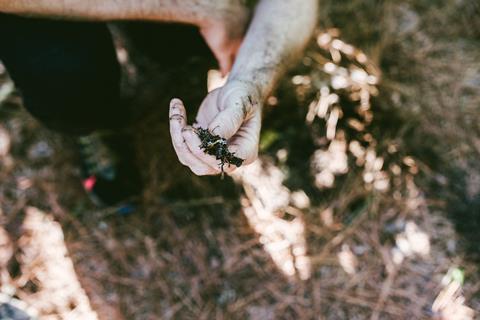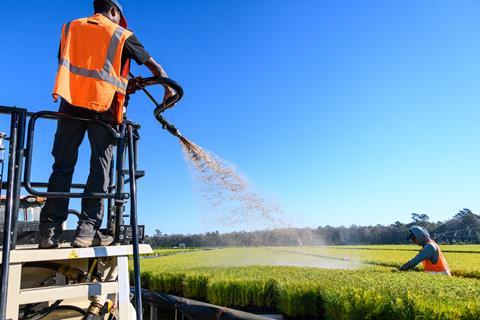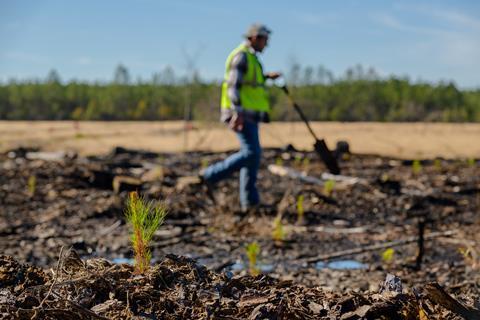My journey into fungal microbiology began with a conviction that fungi are significantly underestimated as a tool for ecosystem restoration and climate action. “Who will speak for the fungi?” was my joking (but sincere) refrain, a play off of The Lorax’s famous line. There is huge research into how plant species diversity controls ecosystem recovery and carbon capture, but comparatively little on how fungi, essential to plant nutrition, may also play a role. Despite my enthusiasm, I expected the realm of forest soil microbiology to remain a niche, unknown field of study in my career. Fifteen years later, interest in both fungi and climate action have taken off in a way I never could have imagined.
To illustrate the profound influence of the forest microbiome, I often draw a parallel to a more familiar system: our own gut microbiome. The human microbiome is made up of an incredibly biodiverse community of bacteria, and disruptions to this community can have far-reaching effects on our overall health. If someone’s illness is stemming from depleted microbial diversity, doctors can actually take bacteria from a healthy person’s gut and transplant them into the sick person, inoculating them with “good” microbes and improving their condition.
Trees have a similar relationship to their soil that we have with our gut. Tree roots form a symbiotic partnership with microbes in the soil, allowing them to access nutrients more efficiently than they could alone. A crucial group of these microbes is mycorrhizal fungi, which develop root-like “hyphae” that functionally extend the tree’s root network. However, much like our own microbiome, the health of the soil microbiome is not a given. Clearcutting, for instance, devastates soil biodiversity, severing this symbiotic partnership and leading to the decline of critical soil fungi. When the next generation of trees is planted, there are fewer and fewer microbial symbionts left to partner with. The microbial species that do remain are only a small subset of what was there before.

Are the trees “sick”, like a person might be in that scenario? At a glance, no. In working forests where clearcuts are still common, many other practices have been implemented to optimize growth, and some key mycorrhizal species are still present. However, given the demonstrated significance of the soil microbiome, I was convinced that forests on degraded soil were not reaching their full potential.
“My colleagues at ETH Zürich and I had pored through hundreds of academic papers to identify studies where the soil microbiome was an active part of the ecosystem restoration process. What we found was remarkable.”
Across 81 studies from around the world, there was a ~64% increase in plant biomass accumulation on average when a native microbiome was restored alongside native vegetation. Essentially, plants needed their native soil microbial community in order to truly thrive.
The implications for forests are profound. Forests play a vital role in the global carbon cycle, capturing and storing around 30% of the carbon we emit globally. The idea that our contemporary forests might be operating at a deficit is both tragic and exciting. Millions of acres of forests are actively managed, and many more have been impacted by human activity. If those forests are storing 30% of our excess carbon, what could forests with restored soil microbiology do?
I founded a startup, Funga, to scale this research and find out. Our current focus is on enhancing the growth of Loblolly pine in the Southeastern U.S. We’ve collected over a thousand soil samples across the region, sequenced DNA to identify the microbial communities present. Pairing this microbiome information with historical growth data and controlling for other environmental variables, we can identify wild soil fungal communities that are statistically linked with faster tree growth rates and overall forest health. With this knowledge, we conduct extensive testing, inoculating seedlings with these wild, healthy, biodiverse microbial communities and planting them in real-world conditions.

This is not a one-size-fits-all solution; optimal microbial communities for one region may have little effect in another. We are several years into this research and development, and each new data point refines our models, improving our ability to predict the ideal soil microbiome for a given region. We are now deploying our inoculations at scale, treating millions of seedlings before they are planted with our land partners. Our carbon project, established just two years ago, will encompass over 25,000 acres by the end of this winter’s planting season.

Restoring soil fungi could fundamentally change how we manage forests, and play a part in our effort to address climate change. However, what excites me most is the doors this research is opening. While regenerative agriculture is gaining widespread attention, regenerative forestry has yet to have its moment. There are so many ways we can better manage forests to achieve outcomes for biodiversity, climate, and the communities that rely on these ecosystems. What if we diversify tree species mixes in these forests? Can we develop new harvest methods that leave some trees in the landscape, retaining habitat for fungi and other macro-biological taxa?
Environmental markets have the potential to fundamentally transform how we manage forests in a way that better supports biodiversity, climate action, and people. These are the ideas that excite and motivate me to do this work – finding novel ways to align ecology and forest management.

Further Reading
Funga’s science explainer page
“Defending Earth’s terrestrial microbiome” in Nature Microbiology
Colin Averill’s TED Talk “How to harness the ancient partnership between forests and fungi”
My Climate Journey Newsletter “Seeing the Forest for the Fungi: Harnessing Fungal Microbiomes to Accelerate Natural Climate Solutions”








No comments yet